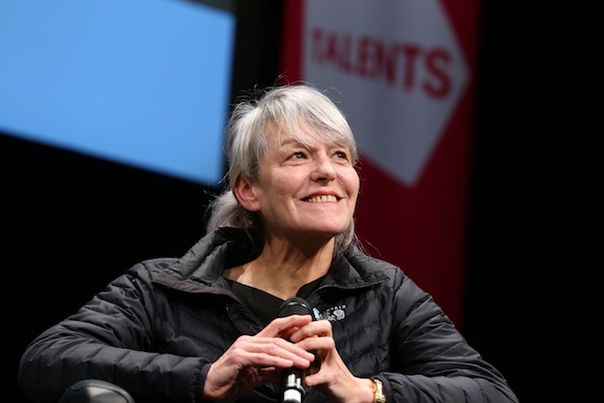An Image Doesn't Have a Sex
Tara Judah of the 2014 Talent Press reports from the Berlinale Talents master class "Defining Distance: The Cinematography of Agnès Godard".

Agnès Godard
The number of women working behind the camera has traditionally been very low, and in most countries it still is. But in France, things are more hopeful, and Agnès Godard, who has worked behind the camera for more than thirty years, is still seeing new opportunities. Experimenting with style and format, fearless in the face of gendered challenges and determined to discover something in a new technology, Godard gives hope to a new generation of up and coming women determined to make their own mark onscreen.
Most acclaimed for her collaborative work with Claire Denis, Godard has now earned her place as one of the most revered female cinematographers in the business. But it wasn't always smooth sailing. “I met some difficulties, of course“, she says, “I decided to consider the difficulties as work difficulties.“ In taking the word “misogyny“ out of the equation she had a far easier battle to fight, “because how can you fight that? It's a mentality. And everybody knows it's very difficult to change a mentality.“
Her career trajectory, moving very quickly from camera assistant and focus puller to camera operator and then to cinematographer, was enabled by both her determination and an industry that, while still predominantly run by men, was more open to women, “I think I've been really lucky to be French because the French have remained, I think, the most open country to this.“
While gender politics still bubble behind the scenes and simmer in her past, it is always the final image that Godard has her eye on, “I am not so keen to try to separate female cinematography and male cinematography, because for me an image doesn't have a sex.“
Having shot for most of her career on 35mm, and having established herself within a man's world, Godard's challenge has since shifted to mastering digital technology, a format she wasn't initially convinced of, “at the beginning I had the feeling that all film shot in digital – digitally – looked the same. I thought, ‘This is a disaster!‘“ But it is now just another opportunity to discover something new: “I'm ready to look for something else – to search, to try. And it's good.“

